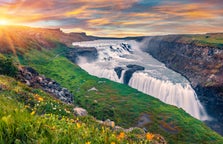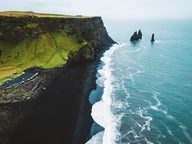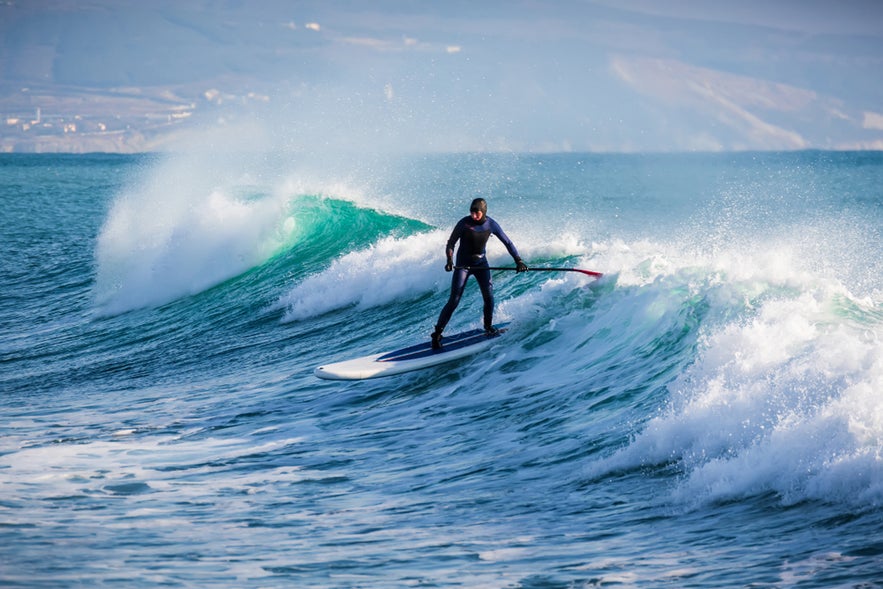
Icelandic surfing comes with its own challenges — and serious bragging rights. For surfing veterans Ólafur Pálsson and Atli Guðbrandsson, the Arctic waters around Iceland provide an experience of wonder and adventure.
"Cold, beautiful, and unpredictable" is how Atli describes Iceland as a surfing destination. He has traversed the world in search of the perfect wave and is a prominent member of Iceland's slowly growing community of surfers who have mastered the waters of the Southwest Coast.
For those eager to follow in their footsteps, getting around is part of the adventure. Many surfers choose to rent a car in Iceland so they can easily reach the best breaks scattered along the coast.
"Surfing has started to get more popular with Icelanders," says Atli. "Many people are trying it out and like the idea of surfing here, but some can‘t be bothered because of the cold, the 50-minute drive, and the effort it takes to learn how to read into the forecasts."
Planning your trip is easier than ever, with access to the biggest selection of Iceland hotels and accommodations. Pair that with flexible self-drive tours in Iceland, and you’ll have the freedom to chase waves while exploring glaciers, waterfalls, and volcanic landscapes along the way.
If you're curious about surfing in Iceland, our guide will help you prepare to embrace the challenge. Keep reading for everything you need to know about catching the perfect wave in the Arctic waters.
Tips for Arctic Wave Chasers
-
Cold & Challenging — Surfing in Iceland is not for the faint of heart; it involves freezing waters, unpredictable weather, and rugged coastlines.
-
Local Knowledge Is King — Finding the best waves requires understanding local forecasts, tides, and breaks, and connecting with the close-knit Icelandic surfing community.
-
Winter Is Prime Time — The best surfing conditions in Iceland occur during the winter months, between October and March, when powerful storms bring heavy swells.
-
Safety First, Always — Surfing with a buddy and respecting the unforgiving nature of Iceland's elements are essential for a safe and enjoyable experience.
Can You Surf in Iceland?
The short answer is yes. Surfing in Iceland demands hard work and a thorough understanding of the Arctic Ocean. Freezing water, snowstorms, and strong winds are challenging, but for many, that’s just part of the fun.
The most dedicated Icelandic surfers welcome the test that comes in the form of weather, logistics, and navigating through the frosty and inhospitable landscapes.
"Most traveling surfers who come here to seek solitude and perfect waves usually find solitude and crap waves," says Ólafur.
He adds, "The trick is to spot that golden window of perfection where everything lines up, making forecasting very difficult, especially for traveling surfers. If you want to score perfect waves, you need to spend time surfing the local breaks and study the different weather patterns."
Icelandic Surfing Safety: Readiness and Respect
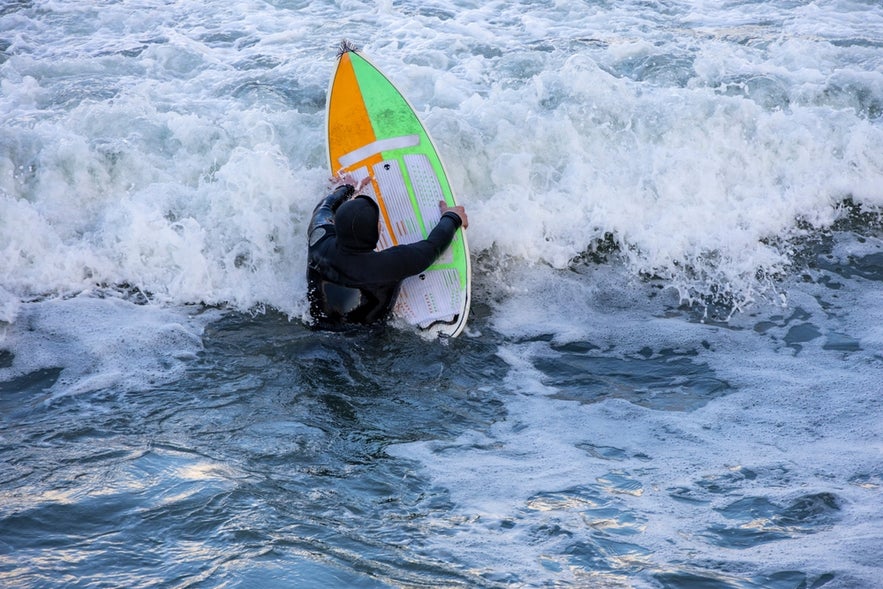 Safety is paramount when surfing anywhere, let alone in the land of fire and ice. Besides the unpredictable ocean and cold weather, there is another setback to overcome: cliffs and rocks. Icelandic beaches are rugged, many with sharp rocks lining the coast or hiding under turbulent waters.
Safety is paramount when surfing anywhere, let alone in the land of fire and ice. Besides the unpredictable ocean and cold weather, there is another setback to overcome: cliffs and rocks. Icelandic beaches are rugged, many with sharp rocks lining the coast or hiding under turbulent waters.
"We do have some beginner beach breaks that are good and without rocks," says Ólafur, "...but all really good surf locations in Iceland are reef- or point breaks, often breaking very close to rocks or cliffs. The wetsuit provides some protection, but you need to be careful and in good shape."
Surfers must always respect the unforgiving nature of Iceland's elements. Everyone needs a buddy, especially those surfing the Icelandic coast for the first time.
"Most breaks here are reef breaks," Atli explains, "...and many of them are fairly shallow, especially at low tide. You have to be very careful and know the spot and the wave. The number one rule is never to surf alone."
The Icelandic surfing community is a very close-knit group that likes to meet both in and out of the water. "The vibe is always good between surfers in Iceland," Ólafur says. "We enjoy sharing waves. Icelandic surfers are like any other surfers; they want to protect Iceland as a surf destination from the masses. Traveling surfers need to be respectful in the water."
Where To Go Surfing in Iceland
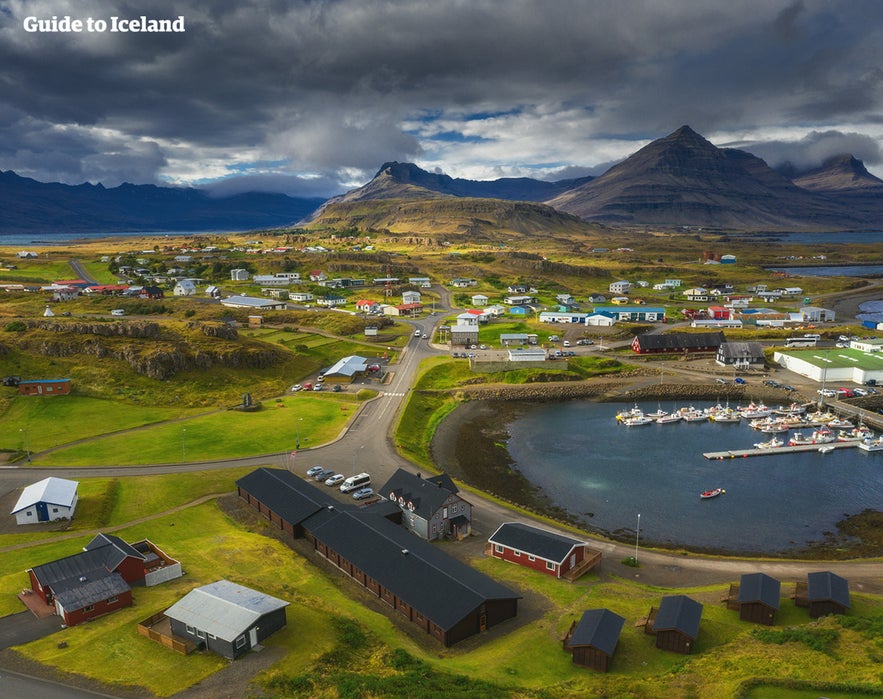
Icelandic surfers most commonly ride the waves around the Reykjanes Peninsula, the land of volcanoes, lava fields, and moon-like landscapes. Barely an hour-long trip away from the hustle and bustle of Reykjavik, visiting the peninsula feels like traveling to a different world.
Ancient lava flows make up most of the peninsula's coastline, so the majority of the waves break on extremely sharp volcanic reefs. There are exceptions with more forgiving conditions, some even suitable for beginners. Here are three popular surfing destinations on the peninsula:
-
The black sand beach at Sandvik offers longer rides into shore and is usually beginner-friendly.
-
Thorli Beach by the town of Thorlakshofn, along the southern Reykjanes Peninsula, is one of the most surfed spots in Iceland, with consistent swells.
-
Hafnir Harbor on the western coast is a versatile surfing spot. The conditions range from mild and suitable for beginners in warmer weather to a challenging thrill at the peak of winter.
If you're in Reykjavik, you can try your luck at the Grotta Lighthouse on the Seltjarnarnes Peninsula. When the conditions are just right with the direction of the winds and the angle of the swell, surfing here is a hidden gem.
How To Travel Around Iceland to Surf
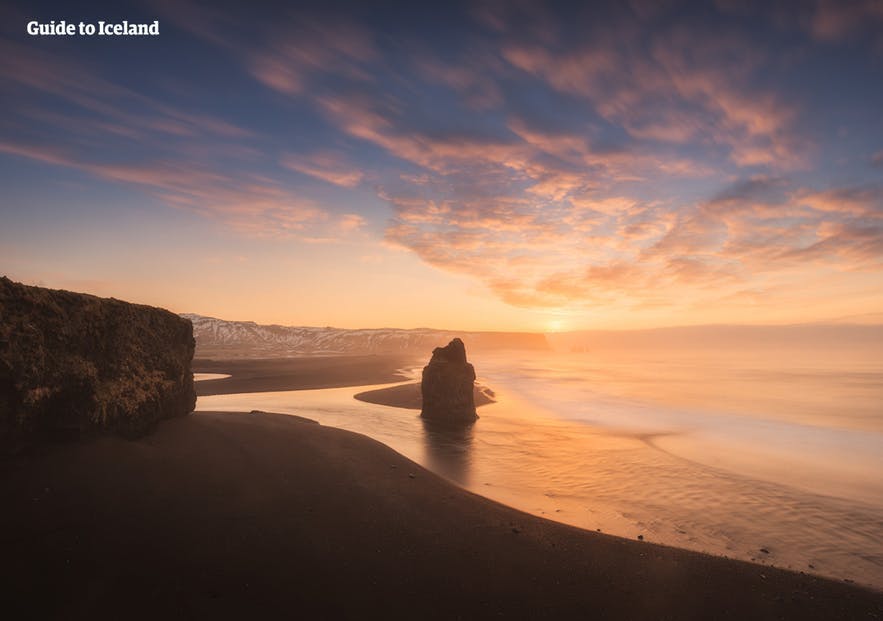
If you’re not interested in winging it on your surfing trip around Iceland, consider booking a self-drive tour for more structure and flexibility. Check out these top-rated tours that take you near Iceland’s top surfing spots:
-
7-Day Northern Lights Self-Drive Tour — This week-long tour takes you around the south coast of Iceland, making it easy to detour to Thorlakshofn and other surfing spots along the way.
-
10-Day Northern Lights Self-Drive Tour of the Ring Road — If you’re looking for a longer trip with more time to check out a variety of surfing spots, consider this 10-day tour around the Ring Road. It offers the chance to experience a bit of everything Iceland has to offer.
When you’re not catching waves, booking activities like an ATV tour of the Thorlakshofn Black Sand Beach or this tour of the Reykjanes Peninsula could be a great addition to any self-drive trip.
When To Surf in Iceland
The best time to surf in Iceland is in the winter. Between October and March, heavy storms all around the island bring along powerful waves.
Of course, the ocean water temperature drops to freezing as well, so 0.2-inch wetsuits (5-6 millimeters) become essential. Surfing in Iceland is possible in the summer, too, if you're willing to do some wave-hunting.
Closely monitoring the Icelandic weather forecast and tidal projections is necessary for a successful surfing adventure in Iceland, no matter the season.
Surf Schools and Equipment Rentals
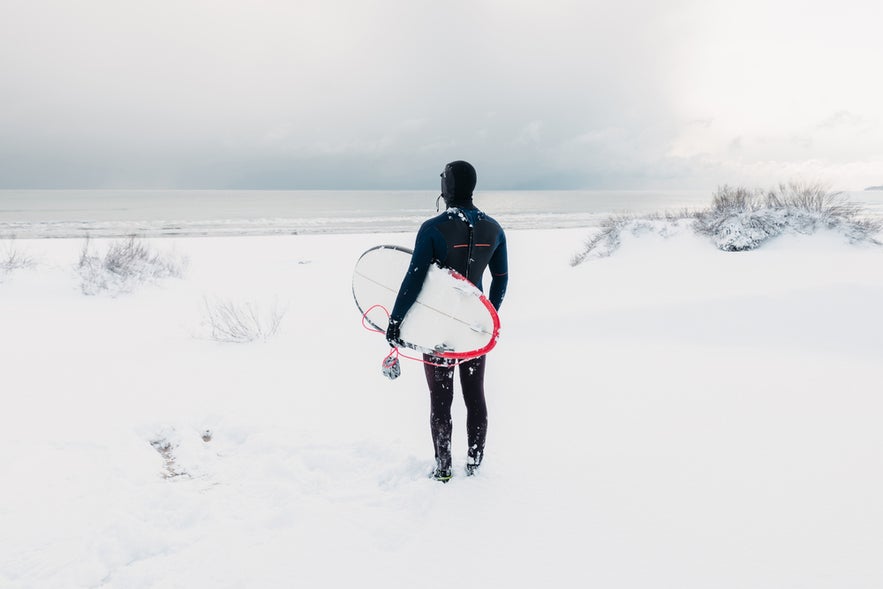 Looking to brush up on surfing techniques or rent a board before heading to the coast? While surfing schools and rentals are limited in Iceland, Arctic Surfers is a popular school based in Reykjavik that offers gear rentals and arranges surf tours. Inquire in advance about booking a weekend surfing camp or a custom adventure.
Looking to brush up on surfing techniques or rent a board before heading to the coast? While surfing schools and rentals are limited in Iceland, Arctic Surfers is a popular school based in Reykjavik that offers gear rentals and arranges surf tours. Inquire in advance about booking a weekend surfing camp or a custom adventure.
Surfing in Iceland FAQs
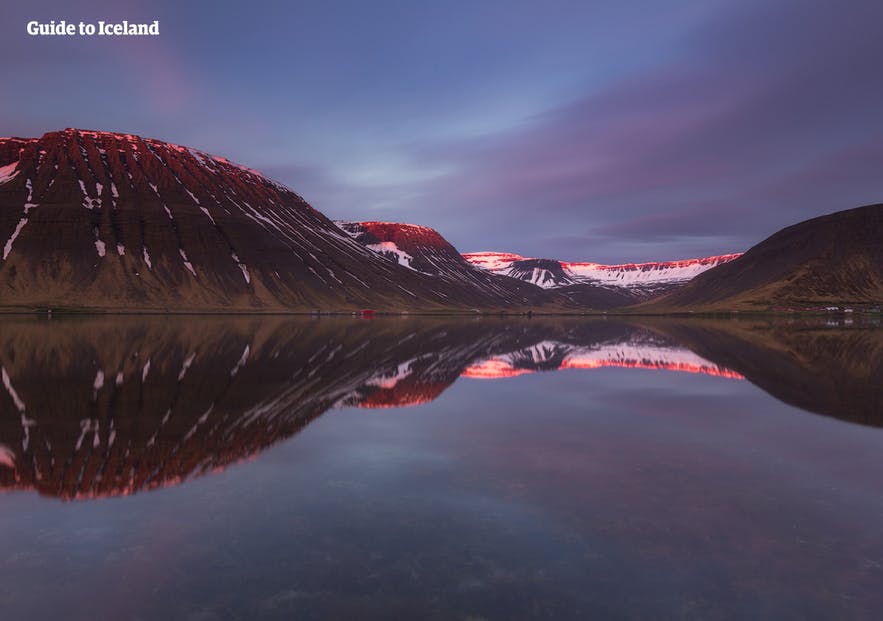 Still have lingering questions before you catch some waves in Iceland? Check out these commonly asked questions.
Still have lingering questions before you catch some waves in Iceland? Check out these commonly asked questions.
What are the water temperatures like in Iceland?
Water temperatures in Iceland vary throughout the year. During late summer and fall, temperatures range from 50–57 F (10–14 C). In winter, temperatures can drop to freezing levels, making appropriate wetsuits essential.
What are the tidal conditions like in Iceland?
Tidal ranges in Iceland can exceed 15 feet (5 meters), and only a few spots can handle all tide heights. It's crucial to study tidal projections carefully before planning a surf session.
How consistent are the waves in Iceland?
Wave consistency varies by season. Winter months (December to February) offer consistent swells, while summer months (May to August) may experience flat spells, particularly in the southwest.
Is prior surfing experience necessary to surf in Iceland?
Yes, due to the challenging conditions, it's recommended that you have prior surfing experience before attempting to surf in Iceland. Beginners should consider taking lessons from local surf schools to navigate unfamiliar waters safely.
Can you surf under the northern lights in Iceland?
During winter, when there are longer nights, it's possible to surf under the northern lights. However, this requires the right conditions, including clear skies, and should only be attempted by experienced surfers due to the cold and darkness.
What kind of marine life should surfers be aware of in Iceland?
Icelandic waters are home to seals, seabirds, and occasionally whales. While sharks exist, they are not a common threat to surfers. The main concern is the cold water and strong currents rather than marine animals.
Do you need a 4x4 vehicle to reach surf spots?
It depends on the location. Some surf spots, like those on the Reykjanes Peninsula, are accessible by renting regular cars. In contrast, others in more remote regions, such as the Westfjords, require a 4x4 vehicle, especially in winter.
Don’t Miss the Chance To Surf in Iceland
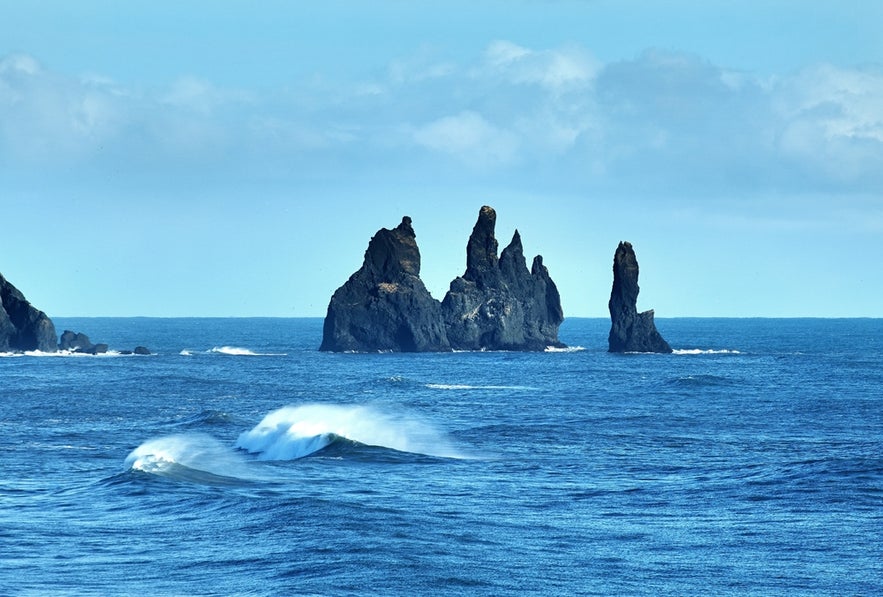 Surfing in Iceland is a thrill that few have dared to experience. Harsh conditions and unpredictable waves may be challenging, but the beauty of the Icelandic coast, seen from another perspective, is the reward.
Surfing in Iceland is a thrill that few have dared to experience. Harsh conditions and unpredictable waves may be challenging, but the beauty of the Icelandic coast, seen from another perspective, is the reward.
Are you interested in surfing in Iceland? Where do you think you’ll catch some waves? Let us know in the comments below.









